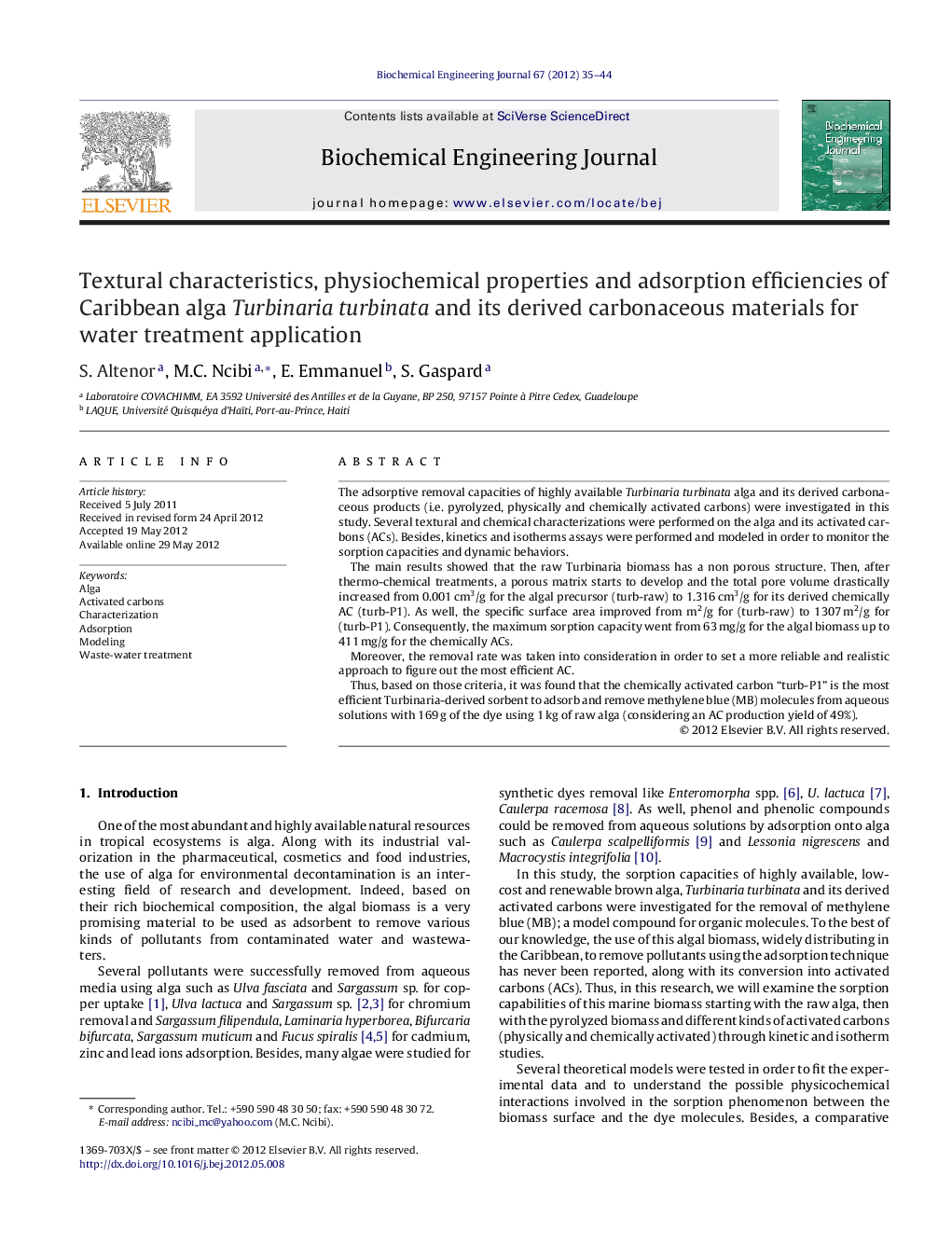| Article ID | Journal | Published Year | Pages | File Type |
|---|---|---|---|---|
| 3501 | Biochemical Engineering Journal | 2012 | 10 Pages |
The adsorptive removal capacities of highly available Turbinaria turbinata alga and its derived carbonaceous products (i.e. pyrolyzed, physically and chemically activated carbons) were investigated in this study. Several textural and chemical characterizations were performed on the alga and its activated carbons (ACs). Besides, kinetics and isotherms assays were performed and modeled in order to monitor the sorption capacities and dynamic behaviors.The main results showed that the raw Turbinaria biomass has a non porous structure. Then, after thermo-chemical treatments, a porous matrix starts to develop and the total pore volume drastically increased from 0.001 cm3/g for the algal precursor (turb-raw) to 1.316 cm3/g for its derived chemically AC (turb-P1). As well, the specific surface area improved from m2/g for (turb-raw) to 1307 m2/g for (turb-P1). Consequently, the maximum sorption capacity went from 63 mg/g for the algal biomass up to 411 mg/g for the chemically ACs.Moreover, the removal rate was taken into consideration in order to set a more reliable and realistic approach to figure out the most efficient AC.Thus, based on those criteria, it was found that the chemically activated carbon “turb-P1” is the most efficient Turbinaria-derived sorbent to adsorb and remove methylene blue (MB) molecules from aqueous solutions with 169 g of the dye using 1 kg of raw alga (considering an AC production yield of 49%).
Graphical abstract.Figure optionsDownload full-size imageDownload as PowerPoint slideHighlights► From low cost Caribbian alga, Turbinaria turbinata, several adsorbents were produced. ► The biomass and its thermo-chemically derived materials were characterized. ► Kinetics and isotherms assays were performed and modeled. ► Biomass modification enhanced significantly the sorption capacity. ► Production yield was estimated for a more reliable assessment of sorbent efficiency.
